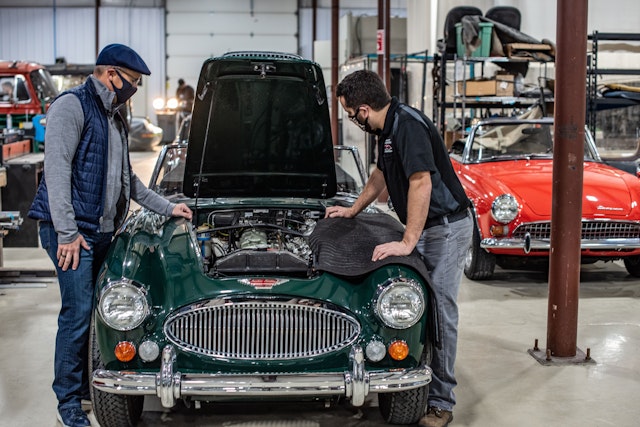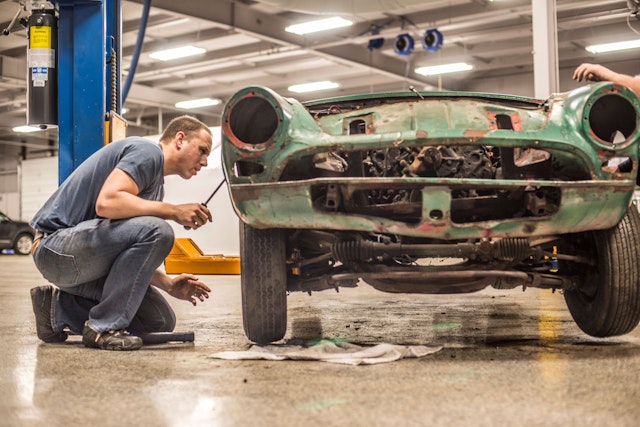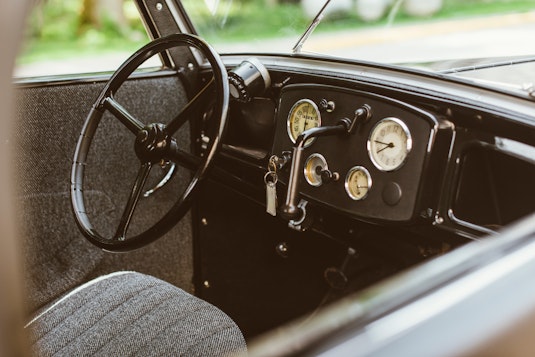What Does It Cost to Restore My Classic Car?

If you’re reading this, we’re guessing you’ve got some car restoration work to do.
Maybe you’ve just purchased a classic ride that’s seen some better days. Or you’ve inherited Dad’s old (but slightly neglected) vintage auto. Perhaps you’ve unearthed a barn find that’s waited for you for years, or maybe you’re planning to take a rolling chassis and build it up from scratch. Any way you look at it, classic car restoration is a daunting process if you’re not a professional.
There are as many things to consider as there are parts to your car. How much restoration does my car need? What can I do myself? What will I spend on parts and labor? Is it possible to increase a car’s value with a good restoration?
All great questions! Here’s how to start calculating what your restoration might cost.
The First Thing to Know About Car Restoration:
Let’s just get this out of the way: No major restoration is cheap or easy. We’re not going to promise you that this project will be inexpensive and quick - even the best-planned projects incur additional unexpected costs and take time to complete. But with some planning, it’s possible to eliminate a number of surprises early.
First, you need to decide what level of restoration you’re looking for. Is this going to be a pristine show vehicle, or are you just looking to get this street legal for some fun cruising? Does this need a frame-off full body workup, or can you get away with some basic body work and an interior update? Are there issues with the electrical system? The brakes? The transmission?
If you don’t have a running list of things your car needs, start one now. And even though you might love the idea of wrenching on your car DIY-style, if you need more than the basics done, we recommend leaving it to the professionals. Luckily for you, we’ve created the Hagerty Expert Repair Network to help guide you to a shop that we recommend for classic vehicles.

Parts and Labor (Not Necessarily In that Order):
If you’re taking this to the pros (which, again, we do recommend), you should prepare yourself for hours of labor costs. Every part of a car’s restoration takes hours - often hundreds of hours - of manual labor. While the hourly rate for auto mechanics varies from state to state and shop to shop, the average hourly labor charge is upwards of $70 per hour, and goes higher for very specialized services.
Labor costs increase with the number of things on your restoration to-do list, and as you get deeper into the repair, you might find things you didn’t expect - once the body comes off, you might discover that the frame needs straightening or repair. Once the engine comes out you might find new issues inside the block. When the interior comes out, you might find more rust than expected. Be prepared for these.
The upside is that paying a professional to do this right the first time beats trying to do it yourself, making things worse and then paying someone to fix your mistakes and get it done right. If you’re intent on doing some of the work yourself, it’s much easier to take it down than build it up - so disassembly of the vehicle and the grunt work of grinding off a paint job is likely going to be the best you can do to save on that hourly rate.
Parts for a classic car can vary wildly depending on the vehicle you’re restoring. If you’re rebuilding an engine that’s widely available or a very popular body style with lots of aftermarket options, you might be able to get away with spending less than a finely-tuned supercar or a rare import.
Some of the best ways to save money on a restoration is by finding the right places to buy parts. If you’re okay with used parts, get to know your local salvage yards, look for parts cars that might have what you need, and consult online forums and local car clubs for recommendations.
If you’re doing your restoration one step at a time, don’t buy more parts than you need - just buy the parts for the part you’re working on now. You might find you don’t need that extra flange or strut down the line. You also run the risk of setting making a big parts purchase now, and forgetting about it later. Ever buy something twice and realize you don’t need the second one later? Don’t do that with a rare radiator or suspension kit.
Above all, have patience: This will take weeks and months, not days. If you can break the restoration down into small jobs, it’ll be easier to digest the amount of parts and labor you’ll need to get it done.
Once I’ve Restored My Car, Can it Increase in Value?
The short answer is: Yes it can, but it probably won’t.
After a major renovation, unless you have an extremely rare, high-value car (or something owned by someone famous) it’s highly unlikely that you will recoup the costs of the overall restoration. This makes it all the more important that you’re restoring the car for your enjoyment, not to pad your investment portfolio down the line.
Look at the top price for your car once it’s perfectly restored, and you’ll probably find that just the paint job or the engine rebuild is more than the overall value. Remember that there are lots of things that have value that aren’t just monetary: the satisfaction of seeing a classic car brought back to life and knowing that you’re keeping a piece of history alive for years to come, for example. Can’t put a price tag on that.
That said, if you really want to target a vehicle in the hopes of finding something that might return a few bucks, our Hagerty Collectors Indices will show you what types of cars are currently trending up or down in terms of value.
